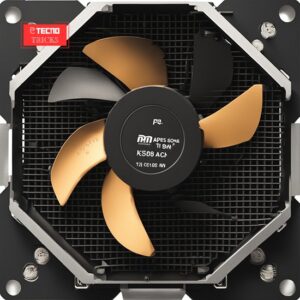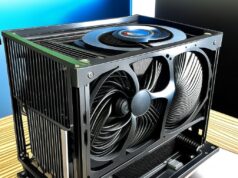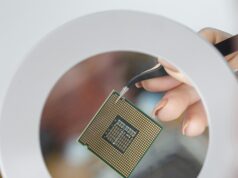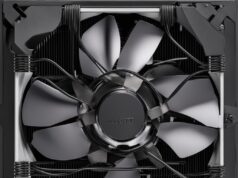It’s a common misconception among many computer users that a CPU fan error is nothing more than a minor inconvenience. Some might even brush it off as a glitch that doesn’t warrant immediate attention. However, the truth is far from this belief. Ignoring a CPU fan error can lead to disastrous consequences for your computer’s health and performance.
Understanding CPU Fan Error
When your computer displays a CPU fan error message, it’s essentially warning you that something isn’t right with the cooling system responsible for keeping your CPU from overheating. This seemingly innocuous error can stem from various issues, ranging from a dusty fan to a malfunctioning hardware component. While it might seem tempting to dismiss the error and carry on with your tasks, doing so can put your entire system at risk.
The Consequences of Ignoring CPU Fan Error
Imagine your CPU as the engine of your computer, and the fan as its cooling system. Just like an engine needs proper cooling to function optimally, your CPU relies on its fan to maintain a safe operating temperature. When the fan fails or encounters errors, your CPU can quickly overheat, leading to system instability, performance degradation, and in severe cases, permanent damage to your hardware.
Why Immediate Action is Crucial
Addressing a CPU fan error promptly is crucial to prevent further complications and safeguard your investment in your computer. By taking proactive steps to diagnose and resolve the underlying issue, you can prevent potential downtime, data loss, and costly repairs down the line. Whether it’s a simple cleaning procedure or a more complex hardware replacement, investing time and effort into fixing a CPU fan error now can save you from headaches later on.
Common Causes of CPU Fan Errors
Now that we understand the importance of addressing CPU fan errors promptly, let’s delve into the common culprits behind these pesky messages. Dust accumulation, fan obstructions, worn-out bearings, and BIOS misconfigurations are just a few examples of factors that can trigger a CPU fan error. By identifying the root cause of the issue, you can take targeted steps to rectify it and restore your system to optimal condition.
Dispelling Misconceptions: The Truth Behind CPU Fan Errors
In the realm of computer troubleshooting, CPU fan errors often elicit a range of reactions from users. Some may dismiss them as mere annoyances, while others might panic at the sight of these ominous messages. However, it’s essential to separate fact from fiction when it comes to understanding CPU fan errors and their underlying causes.
Unraveling the Mystery: Common Causes of CPU Fan Errors
A CPU fan error can manifest for various reasons, each with its own set of implications for your computer’s health and performance. Dust accumulation is a notorious culprit, as it can hinder the fan’s ability to spin freely and dissipate heat effectively. Similarly, fan obstructions, such as cables or debris blocking the airflow, can trigger error messages and lead to overheating issues.
Hardware Woes: Identifying Potential Culprits
Beyond external factors like dust and debris, internal hardware issues can also contribute to CPU fan errors. Worn-out fan bearings, for instance, can result in erratic spinning or complete failure, prompting the system to flag an error. Additionally, faulty connections or damaged components within the cooling system may require closer inspection and troubleshooting to pinpoint the root cause of the error.
Navigating the BIOS: Understanding Configuration Challenges
In some cases, CPU fan errors may stem from misconfigurations within the computer’s BIOS settings. Incorrect fan speed settings or unrecognized fan profiles can confuse the system and trigger error messages during startup. While accessing and modifying BIOS settings may seem daunting for novice users, it’s a crucial step in diagnosing and resolving CPU fan errors effectively.
The Ripple Effect: Consequences of Ignoring CPU Fan Errors
Choosing to ignore CPU fan errors can have far-reaching consequences for your computer’s overall performance and longevity. Persistent overheating can degrade internal components, leading to system instability, reduced lifespan, and even permanent damage to critical hardware. By addressing these errors proactively, you can mitigate the risk of costly repairs and ensure uninterrupted productivity.
Busting Myths: Quick Fixes for CPU Fan Errors
Contrary to popular belief, resolving CPU fan errors doesn’t always require the expertise of a seasoned technician or costly repairs. In fact, many common issues can be addressed with simple DIY solutions and troubleshooting techniques. In this segment, we’ll explore some quick fixes to help you tackle CPU fan errors head-on and get your system back on track.
Cleaning Up: Dust and Debris Removal
One of the most common culprits behind CPU fan errors is dust and debris accumulation within the cooling system. Over time, these particles can obstruct airflow and impede the fan’s ability to function properly. Fortunately, cleaning your CPU fan is a relatively straightforward process that can yield significant results. Using compressed air or a soft brush, gently remove any dust buildup from the fan blades and surrounding components. Be sure to power off your computer and disconnect it from the power source before undertaking any cleaning activities to avoid electrical hazards.
Fine-Tuning: BIOS Settings Adjustment
In some cases, CPU fan errors may be triggered by misconfigurations within the computer’s BIOS settings. Accessing the BIOS interface allows you to adjust fan speed settings, monitor temperature thresholds, and ensure compatibility with your hardware. By navigating to the appropriate menus and making necessary adjustments, you can optimize your system’s cooling performance and minimize the risk of future errors. Just remember to save your changes before exiting the BIOS to ensure they take effect.
Checking Connections: Hardware Inspection
A loose or faulty connection can also contribute to CPU fan errors, particularly if the fan isn’t receiving power or communication signals from the motherboard. Take a moment to inspect the fan’s power cable and ensure it’s securely connected to the designated header on the motherboard. Additionally, check for any signs of damage or wear that may indicate a defective component. Reconnecting or replacing the fan as needed can help resolve connectivity issues and restore proper functionality.
Seeking Software Solutions: Monitoring and Diagnostic Tools
In addition to manual troubleshooting steps, several software tools are available to help diagnose and address CPU fan errors. Monitoring programs allow you to track temperature levels, fan speeds, and system performance in real-time, providing valuable insights into potential issues. Likewise, diagnostic utilities can analyze hardware components for faults or failures and recommend appropriate courses of action. By leveraging these software solutions, you can gain a deeper understanding of your computer’s health and take proactive measures to prevent future errors.
Exploring Cleaning Solutions: Dust and Debris Removal
CPU fan errors often stem from the accumulation of dust and debris within the cooling system, obstructing airflow and impeding fan function. Cleaning the CPU fan is a fundamental yet effective solution to address this issue. By using compressed air or a soft brush, users can meticulously remove dust buildup from the fan blades and surrounding components, restoring optimal airflow and cooling performance. However, while cleaning can alleviate immediate issues, it may not fully address underlying hardware or software malfunctions contributing to the error.
Adjusting BIOS Settings: Fine-Tuning for Optimal Performance
Another avenue for resolving CPU fan errors involves adjusting settings within the computer’s BIOS interface. This approach allows users to customize fan speed settings, monitor temperature thresholds, and ensure compatibility with their hardware. By navigating through BIOS menus and making necessary adjustments, users can optimize their system’s cooling capabilities and mitigate the risk of future errors. Despite its efficacy in enhancing cooling performance, tinkering with BIOS settings requires caution, as incorrect modifications can potentially lead to system instability or hardware damage.
Inspecting Hardware Connections: Ensuring Reliability
A loose or faulty connection between the CPU fan and the motherboard can also trigger error messages. Users should thoroughly inspect the fan’s power cable, ensuring it’s securely connected to the designated header on the motherboard. Additionally, assessing the integrity of the fan and its components for signs of damage or wear is essential. While reestablishing or replacing faulty connections can effectively resolve connectivity issues, users should exercise care to avoid inadvertently exacerbating the problem through mishandling.
Harnessing Software Solutions: Monitoring and Diagnostics
In addition to manual troubleshooting methods, software tools offer valuable assistance in diagnosing and resolving CPU fan errors. Monitoring programs provide real-time insights into temperature levels, fan speeds, and system performance, enabling users to identify potential issues proactively. Similarly, diagnostic utilities analyze hardware components for faults or failures, guiding users towards appropriate corrective actions. While software solutions offer convenience and comprehensive diagnostics, they may require a degree of technical proficiency to interpret and implement effectively.
Final Verdict: Empowering Users with Practical Solutions
In conclusion, dispelling misconceptions surrounding CPU fan errors highlights the accessibility of practical solutions to address these issues. From cleaning and BIOS adjustments to hardware inspections and software diagnostics, users have a range of tools at their disposal to troubleshoot and resolve CPU fan errors independently. While each approach boasts its unique advantages and considerations, collectively, they empower users to take control of their computer’s maintenance and performance, ensuring smooth operation and longevity.
Frequently Asked Questions (FAQs)
Q: Can’t I just ignore CPU fan errors? Are they really that serious? A: While it might be tempting to brush off CPU fan errors as minor inconveniences, they can actually have significant implications for your computer’s health and performance. Ignoring these warnings can lead to overheating, system instability, and even hardware damage over time. It’s best to address them promptly to prevent potential complications down the line.
Q: How often should I clean my CPU fan to prevent errors? A: The frequency of cleaning your CPU fan depends on various factors, including your computer’s environment and usage patterns. Generally, it’s a good idea to inspect and clean your CPU fan at least every few months to prevent dust buildup and ensure optimal airflow. If you notice increased noise or performance issues, it may be a sign that your fan needs cleaning sooner.
Q: Are there any risks involved in adjusting BIOS settings to fix CPU fan errors? A: While adjusting BIOS settings can help optimize your system’s cooling performance, it’s essential to proceed with caution. Making incorrect modifications can potentially disrupt system stability or cause hardware damage. It’s advisable to research thoroughly and consult reliable sources or seek professional assistance if you’re unsure about making changes to BIOS settings.
Q: What should I do if cleaning my CPU fan doesn’t resolve the error? A: If cleaning your CPU fan doesn’t resolve the error, there may be underlying hardware or software issues contributing to the problem. In such cases, it’s recommended to perform further troubleshooting, such as checking hardware connections, updating firmware, or running diagnostic tests. If the issue persists, seeking assistance from a qualified technician may be necessary to identify and address the root cause.
Q: Are there any software tools I can use to monitor my CPU fan and temperature levels? A: Yes, there are several software tools available for monitoring CPU fan speed, temperature, and system performance in real-time. Popular options include SpeedFan, HWMonitor, and Open Hardware Monitor. These tools provide valuable insights into your system’s health and can help you identify potential issues before they escalate into problems.
Q: Can CPU fan errors cause permanent damage to my computer? A: While CPU fan errors themselves may not cause immediate permanent damage, they can contribute to overheating, which can, in turn, lead to hardware degradation or failure over time. It’s essential to address CPU fan errors promptly to prevent potential long-term damage to your computer’s components and ensure its longevity.
Q: Is it necessary to replace my CPU fan if I encounter errors frequently? A: If you consistently encounter CPU fan errors despite troubleshooting and maintenance efforts, it may be a sign that your fan is failing or reaching the end of its lifespan. In such cases, replacing the CPU fan with a new one may be necessary to ensure reliable cooling and prevent further issues. Be sure to choose a compatible replacement and follow proper installation procedures for optimal performance.










